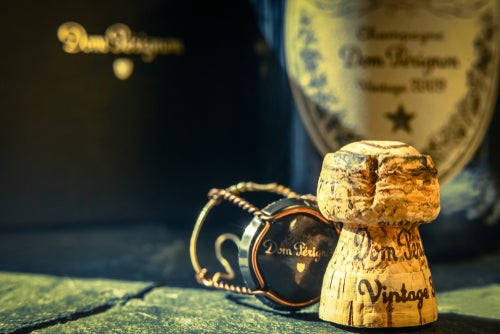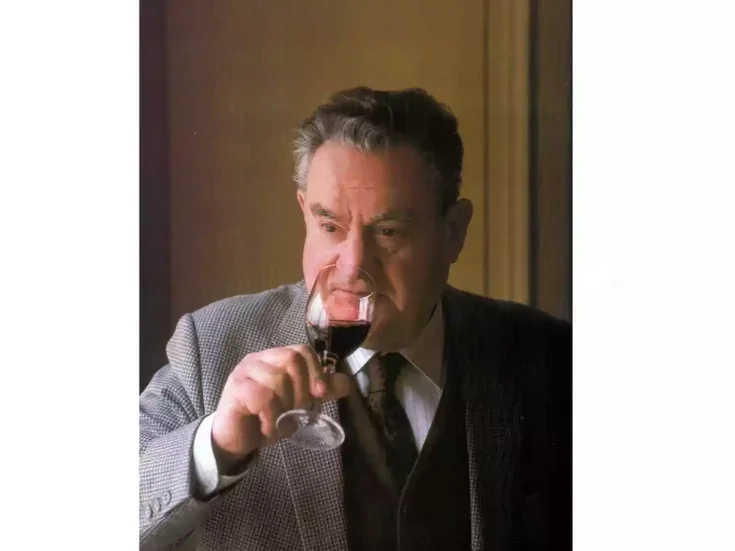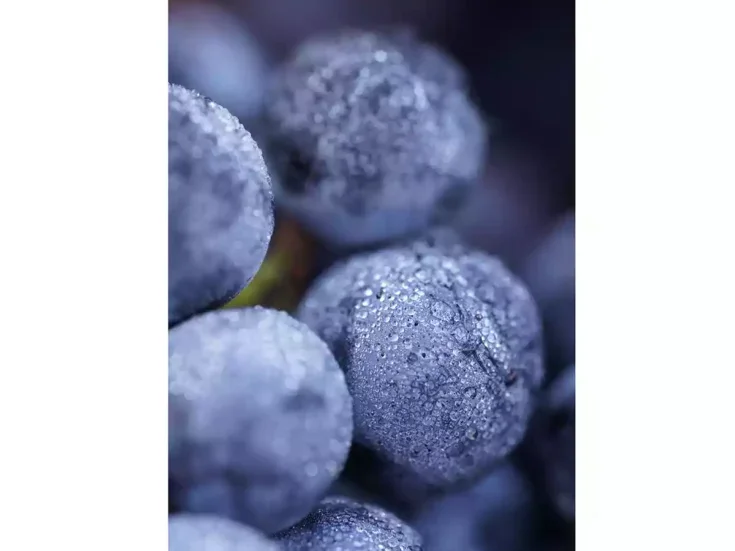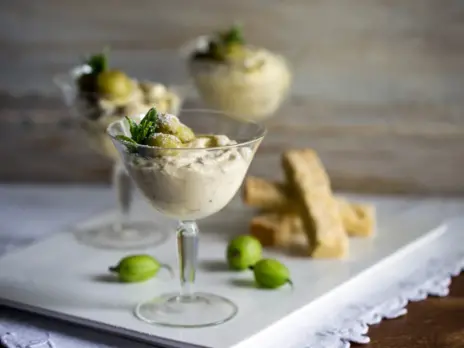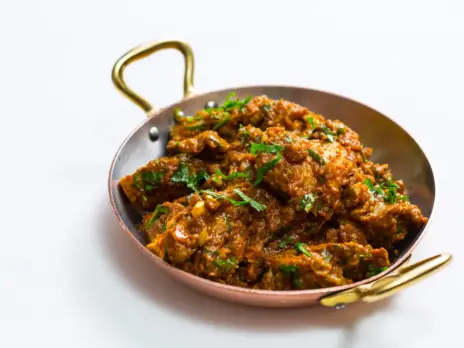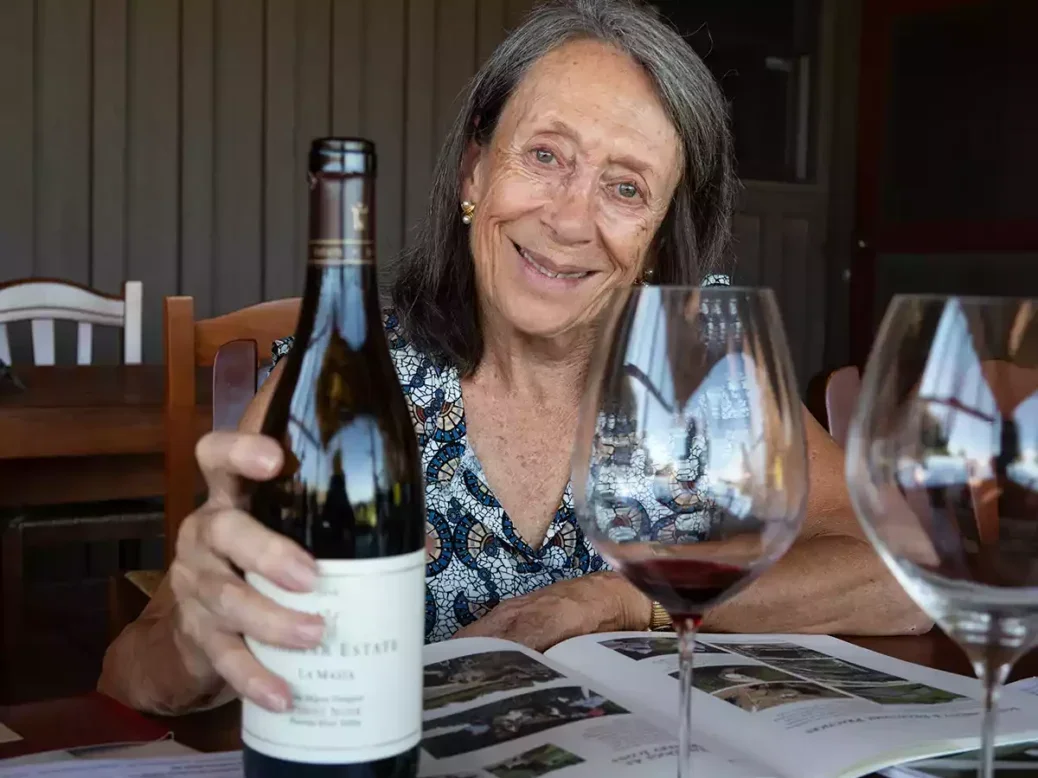
Born into one of Spain’s most important winemaking families, Marimar Torres left her native Catalonia to pursue her dream of becoming a winemaker at her own estate in Sonoma County. As she passes the baton of running the Pinot Noir, Chardonnay, and Albariño specialist to her daughter Cristina, Anthony Rose tells the stories of a dynamic duo.
As I approach Marimar Estate through the pine woods of Sonoma County, the rhythmic thwac of a tennis ball grows louder. It’s Marimar Torres, practising her serve. “Don’t come too close, I’m very sweaty,” she grins. Her three-year-old English Springer Spaniel, Chico, rushes over with no such social distancing inhibitions. Arranging an interview at her home overlooking the Don Miguel vineyard at first proves tricky. “I’ve got a tennis lesson in the morning and a German lesson in the afternoon. But I can move them,” she volunteers, effortlessly accommodating. At 79, Marimar is brimming with vitality, a girls-just-wanna-have-fun spirit lurking beneath the polished exterior.
Finding her own way and making her own luck
The youngest of three children, Marimar grew up under strict parents. As a child, she wasn’t allowed in the vineyards, and there was no television at home. When her two brothers went skiing, she was left behind. One memorable night in her early teens, her older brother found her at a disco in Sitges. He promptly sent her home. Her mother, Doña Margarita, was a quiet advocate for women’s education. “She was too smart to let my father think so,” Marimar recalls with a smile. A firm believer in the value of languages, Doña Margarita sent Marimar to a German school when she was six. By 13, after failing an exam, Marimar was sent to boarding school as punishment. In hindsight, it served her well. Today, she speaks six languages—one more than her mother.
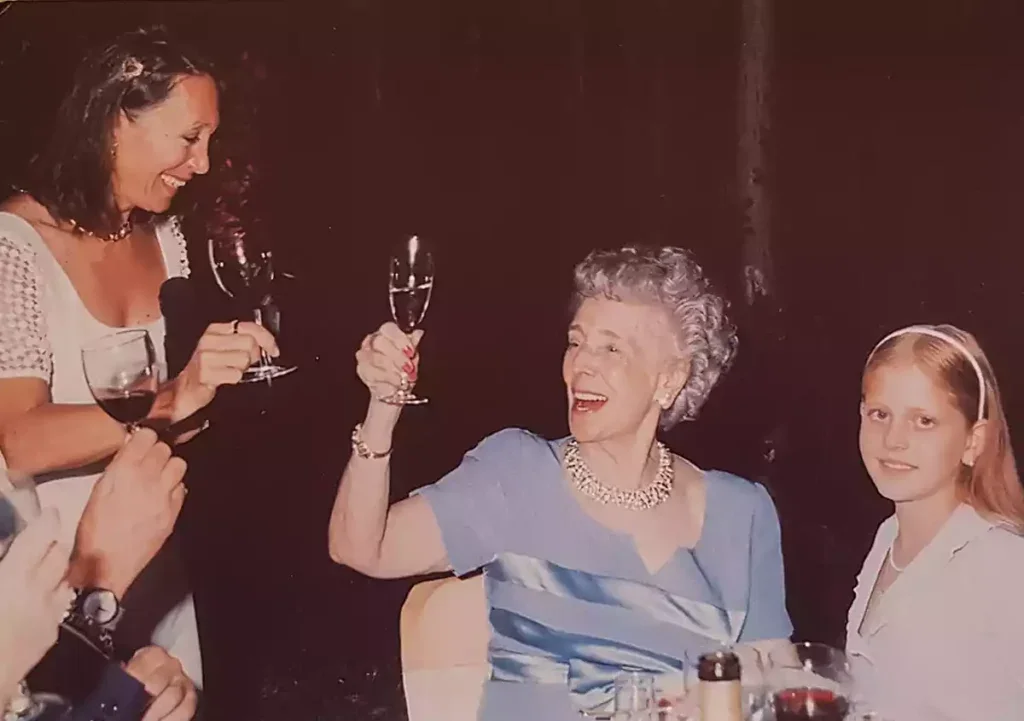
In 1973, Marimar, then 28 years old, accompanied her father, Don Miguel Sr., to San Francisco for a wine convention. The day before he left to return to Spain, they had dinner with their distributor. He arrived brandishing a newsletter from the wine critic, Robert Finigan. It claimed that the Torres 1955 Gran Coronas was the best wine in Spain. Flattered, Don Miguel told Marimar she had to meet him. Despite her moaning that it was her vacation, a lunch date was arranged. “I expected him to be fat and bald, but he was anything but,” Marimar laughs. Finigan called her after her return to Spain, inviting her on a trip to Bordeaux. She agreed—on condition that he arrange separate bedrooms.
Don Miguel Sr. could see the potential in the US market for the Torres brand, so it was easy for Marimar to concoct a reason to stay in San Francisco for three months. The relationship broke up just as she was leaving for Spain. But, on arriving at her apartment from the airport with her mother, a telegram awaited her under the door. It was from the United States. “My mother knew at once but advised me not to shout from the rooftops that I was marrying Robert.”
When Don Miguel Sr. found out, he was dismayed. “He expected me to marry someone very rich or very noble. Robert was neither.” Despite his doubts, the wedding went ahead. Marimar relished being thousands of miles from her parents. The marriage, however, had its ups and downs. ‘He was brilliant and charming, but very laid-back, while I was ambitious for him to succeed. The fact that he remained close to his first wife didn’t help matters. On one occasion, when I accidentally damaged his beloved Alfa Romeo, he went ballistic. On the plus side, although my father gave the marriage a year at most, it lasted four.”
About this time, Marimar’s older brother, Miguel Torres Jr., had scouted Chile. He returned convinced that it was a viticultural paradise. With memories of the Franco regime still fresh, Don Miguel Sr. was eager to invest in overseas projects. Miguel Jr. persuaded his domineering father to invest in Chile. Miguel Jr. then took over the business on condition that he was given a 51% stake in it. “I didn’t realize that 51% was so much more than 50%,” says Marimar. She and her brother Juan Torres received equal shares of the remaining 49%, although Juan had never worked in the business. After the Torres investment in Chile, Marimar convinced her father to invest in California. “I had disobeyed him, but he got over it.”
By this stage, it mattered to Don Miguel Sr. that Marimar was no longer married. He gave Marimar the money to acquire a 56-acre (22.7ha) piece of real estate in Green Valley, in the cool southwest corner of Sonoma’s Russian River Valley. The area was renowned for its Gravenstein apples and plums. After consulting a viticulturist, Marimar called her brother—she had found a property suitable for growing wine grapes. The apple orchard that once stood on the property had been cleared for planting. With only one vineyard nearby and not a Pinot Noir vine in sight, he deemed it a risky venture. Soil samples, however, revealed that the Goldridge series soils, with well-drained, sandy loam and a moderately acidic pH, were ideal for Chardonnay and Pinot Noir. “I lucked out,” Marimar says. “It turned out to be fantastic.”
As a woman, studying viticulture had not been a possibility for her. So, when she wanted to plant a vineyard, she was hoping for her brother’s advice. When he said he was too busy and couldn’t help, she spent the next two years dining at Spain’s best restaurants and writing her first book, The Spanish Table, published in 1986. In this, she drew her culinary inspiration from her husband, who was both a wine and a restaurant critic. At home in Spain, she hadn’t been allowed to cook. In the US, there were no such restrictions—quite the opposite—and she recognized that her cooking could significantly boost wine sales. Her second book, The Catalan Country Kitchen, was published in 1992. Eventually, friends encouraged her to plant the vineyard herself. Miguel Jr. then agreed to come over and help. After preparing the land, Marimar planted one third of it to Chardonnay, and another third the following year.
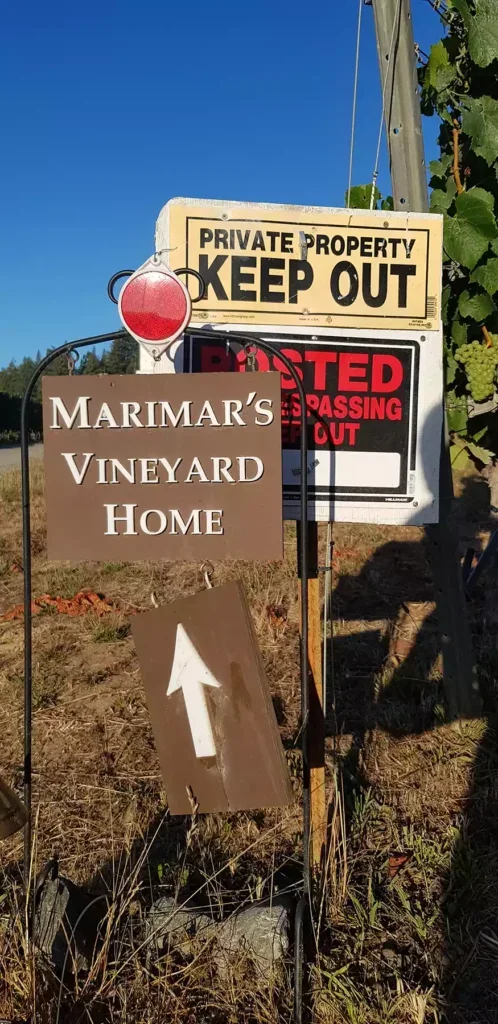
A close mother-daughter duo from the start
With the birth of her daughter, Cristina, in 1988, the opportunity at last arose to bring a pet into the family. Her father had liked dogs and Marimar adored them, but neither her mother nor her husband shared that enthusiasm. “I read about dogs and thought spaniels would be great with kids—they love to run. Chico is my sixth dog.” Marimar ensured that Cristina was raised to speak both Spanish and English. “Spanish is my first language,” says Cristina. “One day, my mother dropped me off at the Montessori School nursery and received a call telling her she needed to speak to her daughter in English.” Proud of her Catalan heritage, Cristina added, “I even found a Catalan tutor when I went to Australia and joined a women’s footy team.”
Marimar arranged extracurricular piano, ballet, and gymnastics lessons for Cristina. Above all, they bonded over horseback riding. One summer, Cristina had gone on vacation to a dude ranch in Wyoming and competed in dressage. It’s where her love of horses was born. In the new property acquired by Marimar in the West Sonoma Coast, she built stables. “Mum would come with me and always pull the trailer,” she recalls. As a lover of the outdoors, Marimar put Cristina on skis when she was only three years old, and by the age of 11, she was heli-skiing. The mother-daughter duo have always been close. Even during the 11 years Cristina lived outside California, they spoke on the phone almost every day. Today, they still ski together and make a point of going heli-skiing in Canada once a year.
Cristina describes Catalan cuisine as “very wine-friendly, with sweet and savory combinations creating a natural pairing with Pinot Noir.” She doesn’t try to emulate her mother in the kitchen; at the same time, Marimar agrees with her assessment. “The Pinot Noirs that score above 95 or 96 are typically big and oaky,” she notes. “I was married to a wine critic, and I remember his tastings. When the wines weren’t great, he might taste 20, but the ones that stick with you are the biggest. The highest scores we’ve ever received for our Marimar Estate Pinot Noir are 95 and 96. Our wines are made for food—you take a sip and appreciate it. You want to enjoy a glass or even a bottle. That’s the kind of wine I’m aiming to make—a wine that doesn’t just deliver a hit of alcohol or oak but leaves a lasting impression.”
The year after Cristina was born, Marimar launched her first Chardonnay. A lover of both red and white Burgundy, she was determined to plant Pinot Noir despite the advice against it. “I discovered a new world in California, free from the baggage of tradition. It’s so open; you can do whatever you want, and for the first time in my life, I found that people would listen to me. At the same time, my family was making Cabernet Sauvignon. So, it made a lot of sense to be planting complementary varieties.” She then planted the final third of her vineyard with Pinot Noir, at around 2,000 vines per acre (5,000 vines per hectare)—a practice more in line with Europe than California.
On November 17, 1991, on CBS’ 60 Minutes program, Morley Safer reported on “The French Paradox.” He discussed the paradox of the French enjoying fatty foods, especially cheese, while avoiding heart disease. He concluded that the consumption of red wine played a role in reducing the risk of heart disease. The French Paradox changed American attitudes toward drinking red wine overnight. “Americans are like sponges,” Marimar says. “You tell them something, and they listen and absorb.” The effect was not only a boost in sales for her Pinot Noir but also for her Chardonnay. “For every case of Pinot Noir, customers had to buy two cases of Chardonnay, and it worked.”
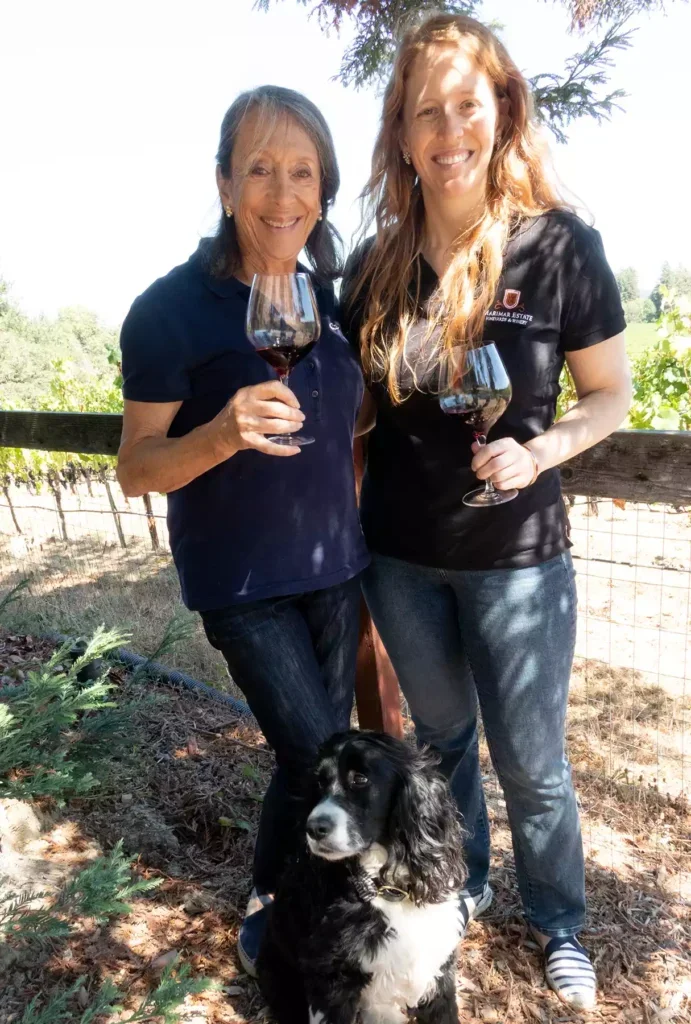
From organic to regenerative viticulture
Her first harvest was in 1989. The first to be vinified at the estate was in 1992, following the construction of the winery that year. The family visited the following year. How thrilled Doña Margarita must have been to see the traditional Catalan farmhouse design. Sideways premiered on September 13, 2004. “But the hype turned out to be counterproductive,” Marimar reflects. “Everyone started planting Pinot Noir. Some are good, some are not. But it created more competition.”
In 2000, Marimar sold shares in the Spanish group. She used the money to purchase a 170-acre (69ha) property in the Freestone Valley in the West Sonoma Coast AVA. She began planting the 20-acre (8ha) Doña Margarita Vineyard with Pinot Noir in 2002. Doña Margarita is at 430–620ft (130–190m) above sea level, six miles (10km) from the Pacific, with southwest-facing, free-draining slopes on Goldridge series sandy loam soils. Tectonic shifts and millions of years of weathering and erosion of marine sedimentary rock formed these soils.
Cooler than Don Miguel, Doña Margarita is slightly more densely planted. It has 2,200 vines per acre (5,500 vines per hectare), using cuttings from the Don Miguel Vineyard. The original 12-acre (5ha) planting, with Pommard and Dijon 115 clones, was expanded in 2008 by another 8 acres (3.2ha) with Pommard and Dijon 667 clones. Its cooler climate, aided by ancient redwood forests, helps. The vines are trained lower to capture the soil’s thermal energy and more leaves are removed in the fruiting zone.
Having embraced organic practices, Marimar came to realize that they didn’t suit her vineyards. Close to the Pacific Ocean, the area’s humidity made them susceptible to mildew and botrytis. “Organic materials are less efficient,” says Marimar. “The Green Valley is more humid than Napa Valley. Farming here organically requires twice the number of tractor passes. The extra sprays needed increase CO2 emissions. California’s organic certification is stricter than in Chile or Spain.” She converted to biodynamic viticulture in 2010, but the wines showed no change. In 2017, she abandoned organic viticulture, transitioning to sustainable practices in 2018.
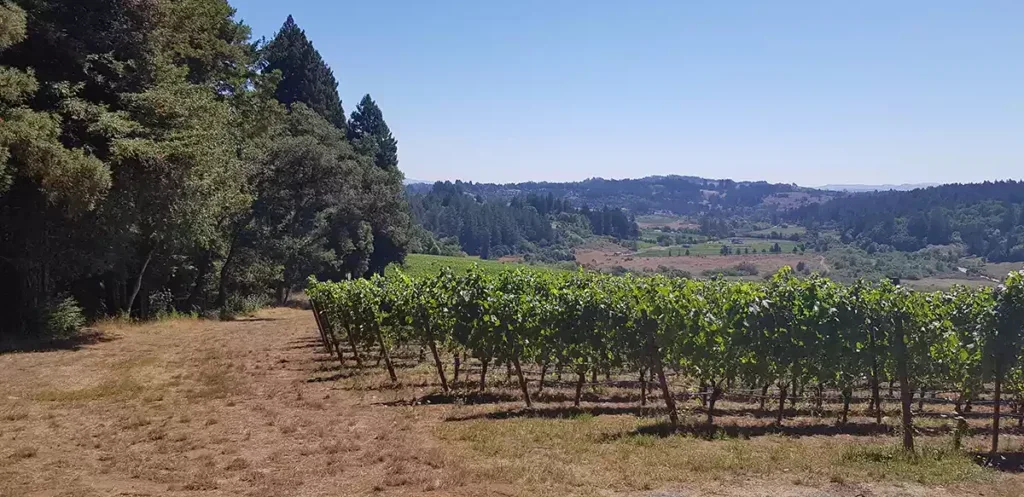
Marimar was influenced by her advisor, Zach Berkowitz. He visited weekly for several years, encouraging her to adopt regenerative viticulture. “Zach talked us into not tilling. He explained the rationale and demonstrated it. It’s a more holistic approach that involves looking at the whole picture.” The county financed a trial with ten tilled and ten untilled rows in the Earthquake block. They were tilled for several years. The results showed better outcomes with no till. Carbon sequestration improved as well. “As Zach said, look at the forest—no one moves the earth, yet the soil remains healthy.” The estate is 100% solar powered. To boost biodiversity, Marimar has introduced chickens, bees, and other animals into the vineyard.
Don Miguel Vineyard today spans 44 acres (18ha). It has Syrah (1999), Tempranillo (2004) with two clones—one from Torres and the other the Napa Heritage clone—and Albariño (2006) from Torres cuttings. The most recent planting is Godello, obtained from a California nursery. For Chardonnay, Marimar uses three clones: See, Rued, and Spring Mountain. For Pinot Noir, it’s Swan, Pommard, Dijon 115, and Dijon 667. Choosing the right devigorating, phylloxera-resistant rootstocks is crucial for yield. The most suitable are Couderc and 101-14. The vertical trellis on gentle, southeast-facing slopes allows for better sun exposure and ventilation from the sea breezes off the Pacific Ocean.
During this time, both Marimar and Cristina expected Cristina to join the business. “I was always clear that I wanted to continue my mum’s story,” Cristina recalls. “MMT [her name for Marimar] was surprised I was interested. She assumed, after seeing her work so hard, I wouldn’t want that lifestyle. But I knew I wanted to go into the wine business and thought about how to prepare for it.” The answer was to gain outside experience in a different industry first. Her Spanish citizenship helped her to get a job at a Mango store in Paris, despite her economics degree from Princeton. “I can’t say it was a great work environment. But it was a valuable experience for understanding another industry.” Cristina then found her footing in the sales team at wine distributor John E Fells in London. She describes it as “tough and competitive.”
She acknowledges having great mentors in Steve Moody and Tom Fortune. “Tom taught me that ‘people buy from people,’ and that was a valuable lesson.” After her time in London, Cristina pursued a full-time MBA at Wharton Business School in Philadelphia. She then worked the harvest at De Loach in the Russian River Valley, followed by two years with Jackson Family Wines, focusing on brand marketing. It was a “phenomenal experience” that sparked a conversation between the sustainability teams at Jackson Family Wines and Torres. This work ultimately led to a conference bringing industry members together to form the International Wineries for Climate Action (IWCA). By 2019, Miguel Torres was a key force behind the initiative. It now has some 50-odd members, both large and small, from across the globe. Notable participants include Gramona, Concha y Toro, Spottswoode, and Silver Oak.
Perfectionism and complementary strengths
Marimar Estate employs around 20 staff. This includes nine full-time Mexican vineyard workers led by Filiberto, the vineyard foreman. The team also has part-time office staff, a tasting-room manager, and an operations manager. Rhonda Smith serves as the viticultural consultant, coming once a month. Two years ago, Taylor Bianco took over production and vineyard management from Tony Britton, who retired after 27 years. Bianco works alongside technical director and consultant Bill Dyer, who has been with Marimar Estate for more than 20 years. While Bianco is effectively the winemaker, the term is not used. “It’s very American to say winemaker,” Marimar explains. “The winemaker is a star. In Europe, the winemaker is not the star; the grapes make 80% of the wine, and the remaining 20% is what you do with the grapes.”
Taylor Bianco has worked in Oregon’s Willamette Valley and in Nelson, New Zealand. He spends much of his time in the vineyard, especially at the end of véraison. His focus is on thinning, dropping green bunches, and spraying to combat the threats of powdery mildew and botrytis. Herbicides and insecticides are avoided. Drip-irrigation is used as needed to prevent water stress. This has been a challenge in recent years. The 2023 vintage, however, saw adequate rainfall. “A vine is like a child,” says Marimar, “you have to give it not what it wants but what it needs.” Netting protects the grapes from birds. Owl boxes control mice and rodents. The loud bird noise near the winery is from an electronic squawk box.
In the cellar, Taylor Bianco uses stainless steel-tanks for fermentation. He also uses three open-top concrete eggs and one made from stainless steel. For Pinot Noir, which includes up to 20% whole-bunch, depending on the year, the wine spends two to three weeks in small stainless-steel tanks. It undergoes pneumatic punch-downs twice daily during malolactic fermentation. Next, it is transferred to barrels, one third of which are typically new French oak from various coopers and forests. It remains in barrel until bottling the following summer. La Masía Chardonnay is whole-bunch pressed in tank, barrel, and eggs. It undergoes malolactic fermentation and remains in barrel until bottling in the spring. The unoaked Chardonnay, Acero, and the Albariño are all fermented in stainless-steel tanks to preserve their freshness. The Godello is fermented in concrete and stainless-steel eggs, as well as in barrels.
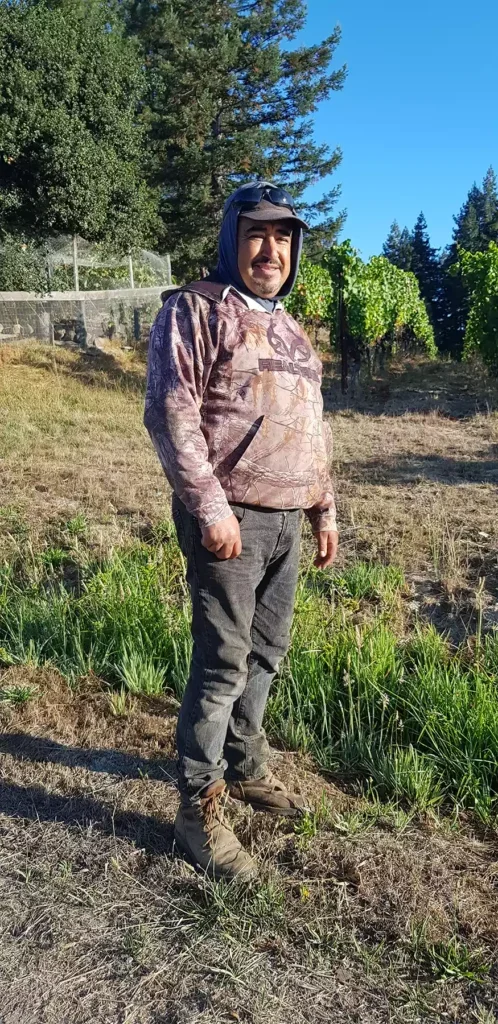
Nine and a half years after college, Cristina joined Marimar Estate in January 2020, just as Covid hit. To begin with, her focus was on direct-to-consumer marketing through virtual tastings, tapping into her alumni network from university and business school. In November 2022, she hired a full-time marketing manager, “to get more bandwidth,” and a sales operations manager to work on strategy and national sales. “Three years after joining the business, MMT said, ‘You’re ready, I’m ready, and it’s time for you to take over as general manager.’ We sent out the press release, and it made the front page of the Press Democrat.” Cristina spends much of her time on sales, marketing, and finance, and is gradually taking over production. This allows Marimar to focus on exports and her ambassadorial role. Recently Cristina has recruited the experienced Rob Stegall as national sales manager.
“We do tastings every three to four weeks with Mum, Taylor Bianco, and Bill Dyer,” says Cristina. “We always conduct them blind, focusing on varieties we produce or are considering producing. It might involve barrel-fermented Chardonnay, usually from producers in the Russian River Valley. This year, we did a Mencía tasting before planting some. It’s also a way to see where our peers are at. I won’t claim to be the expert. I hope Taylor Bianco stays for decades. Having experts around us is crucial. I participate in the conversations. This includes frequent vineyard walks and meetings with the vineyard team. I’m also considering taking some classes at UC Davis.”
Cristina and Marimar are perfectionists. They are obsessed with getting things right. “It can be a double-edged sword. We set very high standards for ourselves, but you can never quite reach perfection. We often laugh at our own high expectations, especially when we taste our wines—it’s exciting to see all the work and passion that goes into making them.” She admits to taking weekends off, while her mother rarely switches off. “My mum is a doer, with a relentless desire to get everything done. She’s all in, all the time, and won’t say no; everything deserves her attention. Mum wants to make decisions yesterday, whereas I’m more strategic. I like to weigh options A and B.” “It’s better to make a bad decision than no decision,” says Marimar. “We have different styles in that regard. But Cristina has taught me that you need to treat your employees more like friends, and I’ve learned to take employees out to lunch.” “Mum loves hosting,” adds Cristina. “Back in the day,” Marimar continues, “it was more hierarchical, but today’s staff want more flexibility. I don’t particularly enjoy social media, but it’s essential.” With Cristina now fully involved in the business, they focus on their strengths. “Yes, it can sometimes feel like too many cooks,” Cristina admits. “We are family-owned and operated, now in the fifth generation from Spain, where the succession was traditionally from father to son,” says Marimar. “Here, for the first time, the baton is passing from mother to daughter.”

